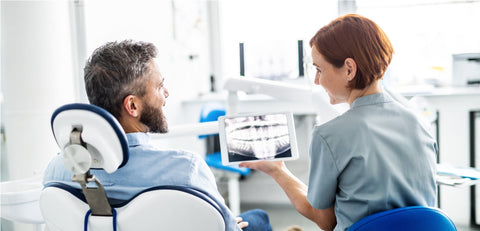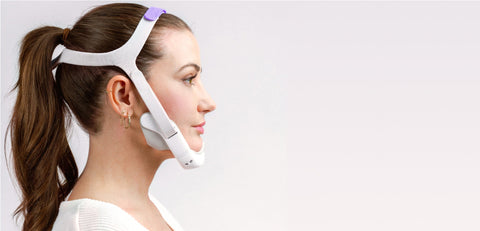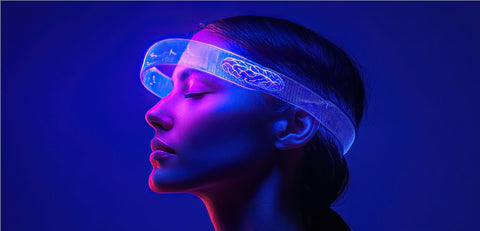Bruxism, or teeth grinding, is a common disorder that can lead to dental and muscular complications. Understanding the different treatment options is essential to effectively manage this problem. This article explores the treatments available for bruxism, focusing on the most effective and innovative approaches.
The impact of caffeine on bruxism
Caffeine, a stimulant found in coffee, tea, and some energy drinks, is often associated with increased muscle activity, including that of the jaw muscles involved in bruxism[1].
Mechanisms of action of caffeine
Caffeine acts on the central nervous system, increasing alertness and muscle tension. This stimulation can exacerbate involuntary contractions of the masticatory muscles, particularly during sleep[1].
Recommendations for caffeine consumption
To reduce the risk of caffeine-related bruxism:
- Limit your consumption to less than 400 mg per day
- Avoid caffeine within 6 hours of bedtime
- Opt for decaffeinated alternatives in the evening
Alcohol and its influence on nocturnal bruxism
Alcohol consumption is also associated with an increased risk of bruxism, particularly during sleep[2].
Effects of alcohol on sleep and bruxism
Alcohol disrupts sleep cycles and can increase nighttime muscle activity. One study showed that alcohol consumption nearly doubles the risk of weekly bruxism[2].
Strategies to reduce alcohol consumption
To minimize the impact of alcohol on bruxism:
- Limit your consumption, especially in the evening
- Hydrate yourself sufficiently between alcoholic drinks
- Consider periods of abstinence to assess the impact on your symptoms
Other substances affecting bruxism
Beyond caffeine and alcohol, other substances can influence bruxism.
Tobacco and nicotine
Smoking is considered an independent risk factor for bruxism. Smokers are more than twice as likely to develop bruxism as non-smokers[3].
Recreational drugs
Certain drugs, including amphetamines and cocaine, are associated with a significant increase in bruxism. These substances stimulate the central nervous system and can exacerbate involuntary muscle contractions[4].
Holistic Approaches to Reduce Bruxism
Managing bruxism is not limited to avoiding certain substances. A comprehensive approach may include:
Relaxation techniques
Practicing meditation, yoga or deep breathing can help reduce stress, which is often associated with bruxism.
Sleep hygiene
Establishing a regular sleep routine and creating an environment conducive to rest can improve sleep quality and reduce episodes of nocturnal bruxism.
Jaw Exercises
Specific exercises can help relax the jaw muscles and reduce the tendency to clench.
Innovative solutions: the Bruxless system
Faced with the limitations of traditional treatments, innovative solutions such as our Bruxless device offer new perspectives for the treatment of bruxism.
How Bruxless works
Bruxless uses cutting-edge sensor-based technology that detects contractions of the masseter muscles. In response, the device emits calibrated vibrations that trigger a natural jaw-relaxation reflex[5].
Advantages of Bruxless
Unlike traditional occlusal splints, Bruxless:
- Treats the cause of bruxism rather than its symptoms
- Offers superior comfort
- Allows precise monitoring of bruxism episodes via a dedicated application
Conclusion: towards a multifactorial approach to bruxism
Reducing the intake of caffeine, alcohol, and other stimulants is an important step in managing bruxism. However, a holistic approach, combining lifestyle changes, relaxation techniques, and innovative solutions like Bruxless , offers the best chance of lasting relief.
By adopting a comprehensive strategy and staying tuned to Bruxless ' technological advances, people suffering from bruxism can expect a significant improvement in their quality of life and oral health.
[1] Rintakoski, K., Ahlberg, J., Hublin, C., Broms, U., Madden, PA, Könönen, M., ... & Kaprio, J. (2010). Tobacco use and reported bruxism in young adults: A nationwide Finnish Twin Cohort Study. Nicotine & Tobacco Research, 12(6), 679-683.
[2] Rintakoski, K., Ahlberg, J., Hublin, C., Broms, U., Madden, PA, Könönen, M., ... & Kaprio, J. (2010). Bruxism is associated with nicotine dependence: a nationwide Finnish twin cohort study. Nicotine & Tobacco Research, 12(12), 1254-1260.
[3] Manfredini, D., Lobbezoo, F., Giancristofaro, RA, & Restrepo, C. (2013). Association between proxy‐reported sleep bruxism and quality of life aspects in Colombian children of different social layers. Clinical oral investigations, 17(4), 1063-1069.
[4] Winocur, E., Gavish, A., Voikovitch, M., Emodi-Perlman, A., & Eli, I. (2003). Drugs and bruxism: a critical review. Journal of orofacial pain, 17(2).
[5] https://www.bruxless.com










